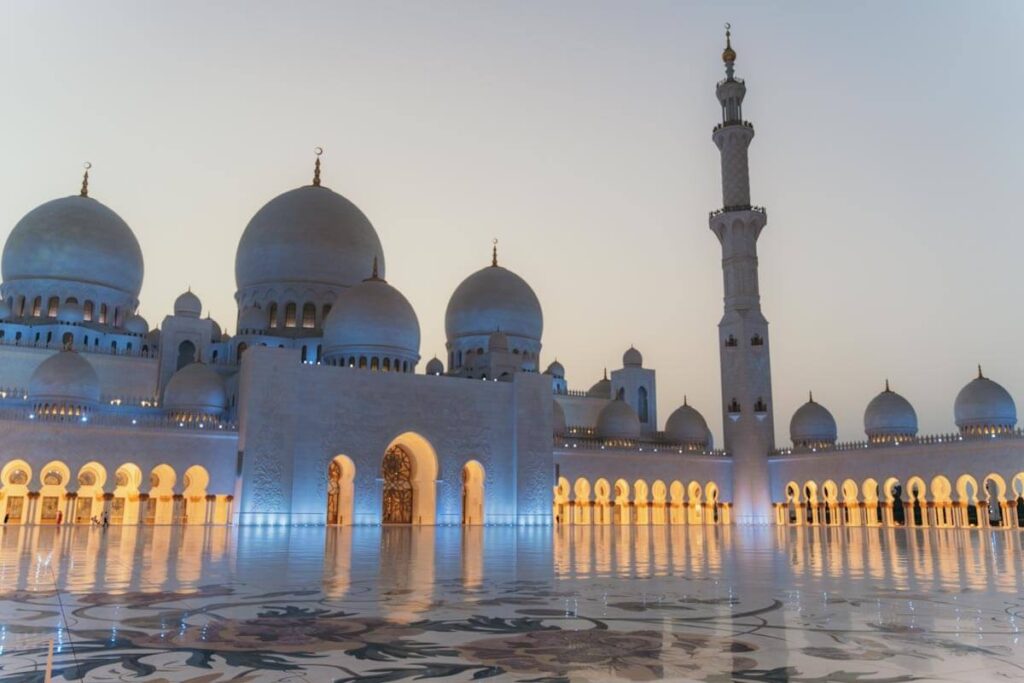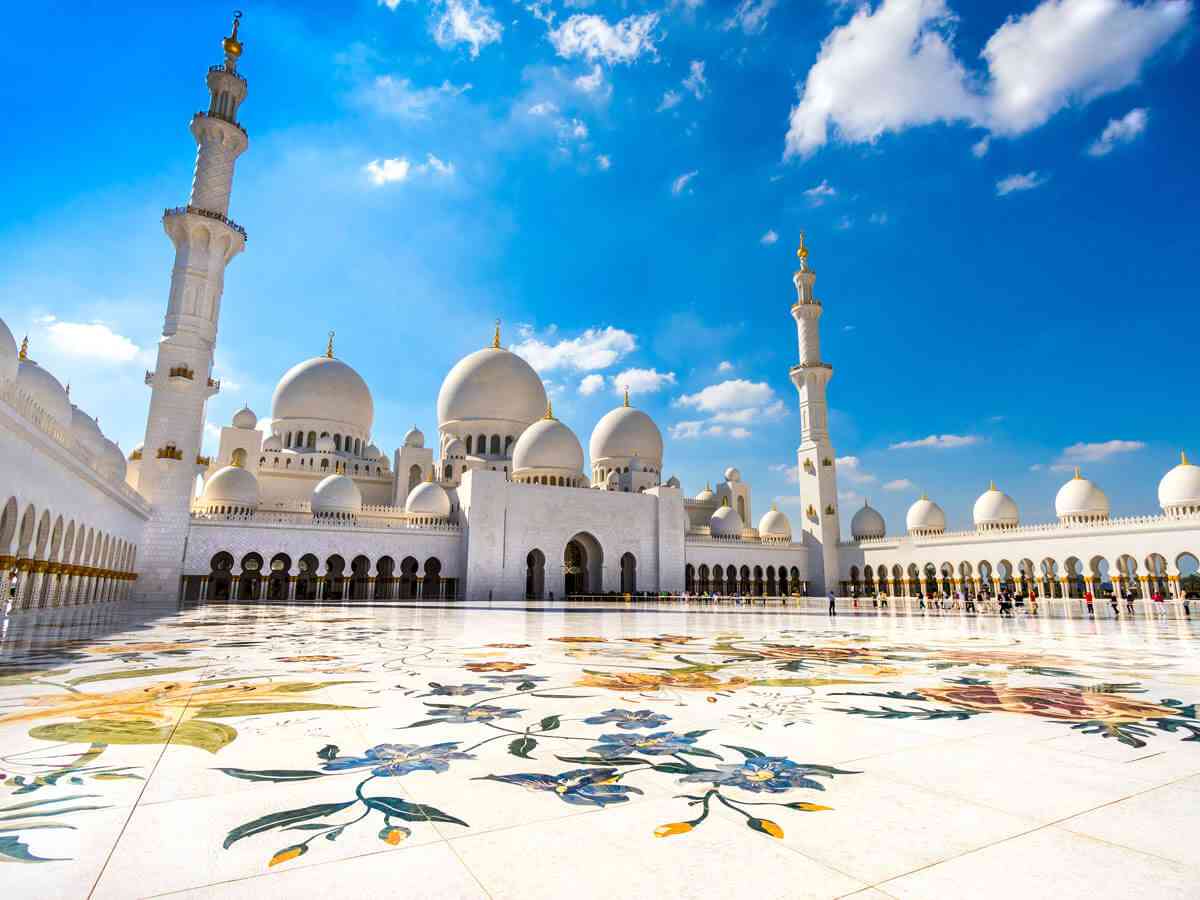Sheikh Zayed Grand Mosque, UAE — The Complete, Human‑Centric Guide to Abu Dhabi’s Most Visited Landmark
Here’s a fact that still stuns even repeat visitors: the Sheikh Zayed Grand Mosque can welcome 40,000+ worshippers at once, yet every column, chandelier, and marble inlay still feels obsessively handcrafted and personal. This isn’t just the UAE’s largest mosque; it’s a living manifesto of cultural unity, architectural ambition, and spiritual serenity — and one of the few grand mosques in the region that actively invites non‑Muslim visitors to learn, reflect, and be awed.
In this deeply authoritative guide — written for readers of TheDubaiWeb.com, your trusted local source for lifestyle, travel, business and culture — we’ll cover the mosque’s history, symbolism, architectural innovation, visiting rules, dress code, photography etiquette, and smart trip-planning tips. We’ll also answer the most searched questions in a rich FAQ to help you rank (and stay ranked) across modern, AI-powered search experiences.
Quick facts (so you can plan in under a minute)
- Location: Abu Dhabi, United Arab Emirates
- Capacity: ~40,100 worshippers
- Prayer halls: Main hall (~7,000 capacity) + two smaller halls (~1,500 each, including a women’s hall)
- Minarets: 4, each ~107 m high
- Domes: 82 (largest mosque dome in the world: 85 m high, 32.8 m diameter)
- Columns: 1,000+ overall; 96 inside the main prayer hall
- Carpet: 5,627 m², ~35 tons, ~2.268 billion knots — considered the largest hand-knotted carpet in the world
- Chandeliers: 7 Faustig (Germany) chandeliers, studded with millions of Swarovski crystals
- Courtyard marble mosaic: ~17,000 m² — among the largest marble mosaics on earth
- Primary materials: White marble, gold, semi-precious stones, ceramics, crystals
- Architectural DNA: Moorish, Mamluk, Ottoman, Fatimid, Persian, Mughal & Indo‑Islamic influences — composed into a resolutely contemporary statement
Why the Sheikh Zayed Grand Mosque matters (far beyond its scale)

The mosque is the spiritual heart of the UAE and the culminating vision of the country’s founding father, Sheikh Zayed bin Sultan Al Nahyan. His brief was ambitious and inclusive: unite the cultural diversity of the Islamic world with historic and modern values of architecture and art. Construction began in 1994, the complex was inaugurated in December 2007, and Sheikh Zayed himself rests in a mausoleum within the grounds — a place where Quranic recitation is maintained continuously.
Beyond the numbers, it’s a place that translates Islamic concepts — light, reflection, repetition, symmetry, remembrance — into architecture. From the moon‑phased lighting that bathes the exterior walls in shifting blue‑grey hues, to the Kufic, Thuluth and Naskh calligraphy that threads sacred attributes through the walls, every choice is intentional, symbolic, and pedagogical.
A brief history & the founding vision
- 1994–2007: 13 years of construction.
- December 2007: Official inauguration.
- Founding vision: A global team of 3,000+ artisans and 38+ contracting companies helped realise a structure designed to “unite the world” — you see it in the sourcing of materials (Italy, India, North Macedonia, China, Germany, Turkey, Iran, the UK, Syria, Pakistan, Malaysia, New Zealand, and more) and in the stylistic vocabulary spanning the Islamic world.
- Management & cultural role: The Sheikh Zayed Grand Mosque Center (SZGMC), housed in the west minarets, runs day‑to‑day operations, curates educational programs, and maintains a library (in the northeast minaret) with books in Arabic, English, French, Italian, Spanish, German, and Korean.
Recommended: Sharjah to Abu Dhabi Bus Timings
Architecture & design: where global craft meets Emirati ambition
A mosaic of Islamic styles — and a modern, unified language
- Domes: Inspired by Mughal and Indo‑Islamic precedents, wrapped in pristine Greek and Italian white marble, topped with gold-leaf finials.
- Archways: Moorish horseshoe/keyhole arches repeat rhythmically, framing the courtyard and arcades.
- Minarets: Classically Arab in form, doubling as functional towers containing offices and the library.
- Floorplan & dome layout: Heavily informed by Lahore’s Badshahi Mosque; the main axis is rotated ~12° south of true west to face the Kaaba in Mecca.
Materials that tell a story
- White marble cladding: Sivec (North Macedonia) on the exterior, Lasa (Italy) internally; Makrana (India) for annexes and offices; East White & Ming Green (China) for accents.
- Inlays: Semi-precious stones — lapis lazuli, carnelian, amethyst, mother of pearl, abalone — transform walls and columns into botanical tapestries.
- Courtyard mosaic: Conceptualised by British artist Kevin Dean, who pulled Middle Eastern flora (tulips, lilies, irises, roses) into the design, then translated them into thousands of pieces of coloured marble.
The “superlatives” people remember
- The carpet: ~5,627 m², ~35 tons, 1,200–1,300 artisans, 2.268 billion knots, designed by Ali Khaliqi (Iran).
- The chandeliers: 7 in total, gold-plated with millions of Swarovski crystals; the largest inside a mosque’s prayer hall is among the biggest globally (~10 m in diameter, 15 m high).
- The lighting concept: Designed by Speirs + Major (UK) to mirror the lunar cycle — a poetic interface between sacred time and architectural expression.
Visiting the Sheikh Zayed Grand Mosque: everything you need to know
Is entry free?
Yes. Entry is free for visitors outside prayer times. Free guided tours (usually ~45 minutes, often in English & Arabic) are offered — take one. You’ll get context on theology, symbolism, and artistic details most self-guided visitors miss. (Audio guides in multiple languages are commonly available, too.)
Can non‑Muslims visit?
Absolutely. The Sheikh Zayed Grand Mosque is one of the most welcoming mosques to non‑Muslims, with a clear educational mission. Respectful attire and behaviour are mandatory.
Dress code & etiquette (don’t get turned back at the gate)
- Women: Long, loose, ankle-length clothing with long sleeves and a headscarf that covers the hair.
- Men: Long trousers and shoulders covered.
- Provided attire: If you’re not dressed appropriately, you’ll be guided to changing rooms where abayas and kandouras are loaned free of charge.
- Shoes: You’ll remove them before entering prayer halls — wear easy on/off footwear.
- Photography: Allowed almost everywhere (except the mausoleum of Sheikh Zayed). Always be sensitive to worshippers; avoid obstructing prayer spaces for photos.
Best time to visit
- Late afternoon into sunset: You’ll catch the mosque in daylight, golden hour, and its lunar-inspired night lighting — three atmospheres in one trip.
- Fridays: Expect restricted access during Jumu’ah (Friday prayers); plan your sightseeing for non-prayer hours.
Getting there (from Dubai or central Abu Dhabi)
- From Abu Dhabi city: Taxis and ride-hailing apps are the fastest. Public buses connect most areas to the Grand Mosque as well.
- From Dubai: Many travellers book guided day trips (easy, time-efficient) or self-drive via E11. Public buses run from Dubai to Abu Dhabi’s central stations, where you can connect by taxi.
- See our How to Get from Dubai to Abu Dhabi for routes, costs, and pros/cons.
Accessibility
The complex is wheelchair accessible, with wide, gently sloped walkways, elevators, and staff support available if needed. If accessibility is key to your itinerary, check our Accessible Travel in the UAE guide on TheDubaiWeb.com.
Read the mosque like a pro: what to look for (and why it matters)
1) The Qibla Wall
Facing Mecca, inscribed with the 99 Names (Attributes) of Allah in Kufic script, designed by Mohammed Mandi Al Tamimi (UAE), with fiber-optic lighting that creates a soft, organic glow.
2) The Columns
96 in the main prayer hall, 1,048 across the complex — each a botanical microcosm of inlaid stones, marble, and mother of pearl. Notice how the repetition induces calm — a spatial dhikr.
3) The Courtyard Mosaic
Stand on the edge to see how the floral vines spiral inward, evoking the infinite, and the reflecting pools double the arcades’ length in water.
4) The Lunar Lighting
If you can, visit twice—once near the full moon (crisper whites), and once when the moon is waning (deeper blues). It’s a rare case of cosmology coded into façade lighting.
Cultural etiquette & mindful travel
- Lower your voice inside prayer halls.
- Ask before photographing people, especially worshippers and families.
- Do not photograph the mausoleum.
- Respect prayer times: Some zones may close briefly; security will guide you.
- Dress with intention — modesty signals respect and enhances your welcome.
Smart trip stacking: what else to see nearby
If you’re already in Abu Dhabi, combine the mosque with:
- Louvre Abu Dhabi – for architecture buffs and art lovers.
- Qasr Al Watan (Presidential Palace) – for grand design and cultural exhibits.
- Corniche & Emirates Palace – for skyline views and a luxe coffee stop.
FAQ: Sheikh Zayed Grand Mosque, answered clearly
What is so special about Sheikh Zayed Grand Mosque?
Its scale, craftsmanship, and philosophy of inclusivity. You’ll find the largest hand-knotted carpet, monumental chandeliers studded with millions of Swarovski crystals, and one of the world’s largest marble mosaics — all embedded within a structure that actively welcomes non‑Muslims to learn about Islam. Architecturally, it synthesises Islamic styles from across centuries and continents into a contemporary, Emirati-led expression.
Is entry free in Sheikh Zayed Mosque?
Yes, entry is free, and free guided tours are typically available. You can also opt for audio guides if you prefer to explore at your own pace.
Can non-Muslims go to Sheikh Zayed Mosque?
Yes. The mosque is open to non‑Muslims outside of prayer times, with clear dress code and etiquette rules to ensure the sanctity of the space.
Which is the richest mosque in the world?
“Richest” isn’t a formal or particularly useful category for religious sites. However, the Sheikh Zayed Grand Mosque is undeniably among the most lavishly constructed and artistically detailed mosques globally, using tons of white marble, gold plating, semi‑precious stones, and rare materials. If you’re comparing architectural opulence, this one is near the top.
Do I need to book in advance?
Policies evolve, but advance online registration for visiting slots or tours is often encouraged to manage crowds efficiently. When in doubt, arrive early or check official channels before you go.
What should I wear?
Women should wear loose, ankle-length clothing, with sleeves and a headscarf. Men should wear long trousers and avoid sleeveless tops. If you’re not compliant, you can borrow appropriate attire on site.
Can I take photos?
Yes, photography is allowed in most areas. No photos of the mausoleum, and always be respectful of worshippers and private prayer.
How long do I need to see everything?
Budget 1.5 to 2 hours for a meaningful visit, including a tour, prayer halls, courtyards, and plenty of time for photography.
Is the mosque open on Fridays?
Yes, but access for visitors is restricted during Friday prayers. Plan to visit around prayer times or choose another day for full access.
Is there a dress rental fee?
Abayas and kandouras are typically loaned free of charge if your clothing is not compliant.
Is the Sheikh Zayed Grand Mosque the largest mosque in the UAE?
Yes — it is the largest mosque in the UAE and the central place of worship in Abu Dhabi.
What languages are the tours offered in?
Commonly English & Arabic; audio guides often cover 10+ languages. Check onsite or online for current availability.
Final word
Whether you’re an architecture enthusiast, a student of Islamic art, a photographer chasing the perfect reflection, or a first-time visitor eager to understand Emirati identity beyond the skyline, the Sheikh Zayed Grand Mosque delivers on every level. Use TheDubaiWeb.com’s companion guides to craft a seamless itinerary — and visit with the same intention the mosque was built with: to learn, to connect, and to be moved.
- Al Nahda 2 Postal Code, UAE – Complete & Accurate Guide (Dubai) - December 29, 2025
- La Mer Beach Dubai Guide – Free Entry, Things to Do & Best Time to Visit - December 28, 2025
- Umm Suqeim Night Swimming Beach Dubai, UAE - December 28, 2025

